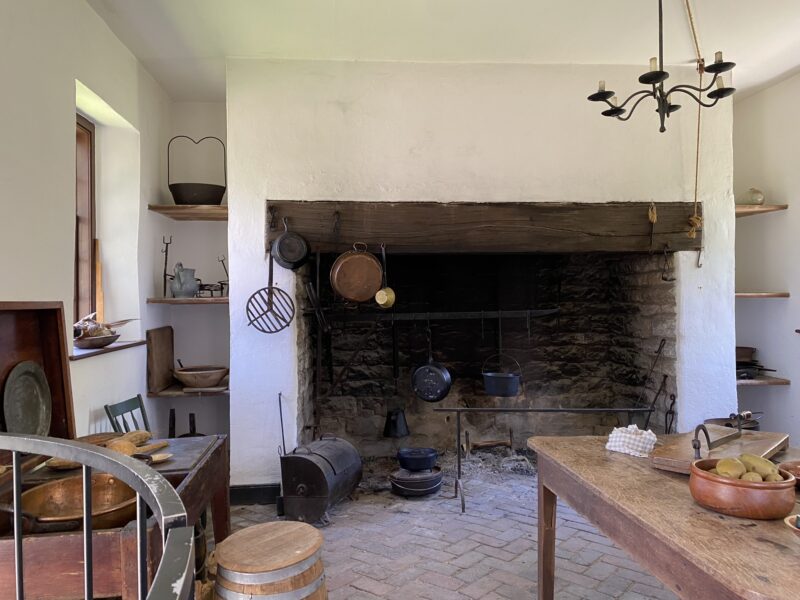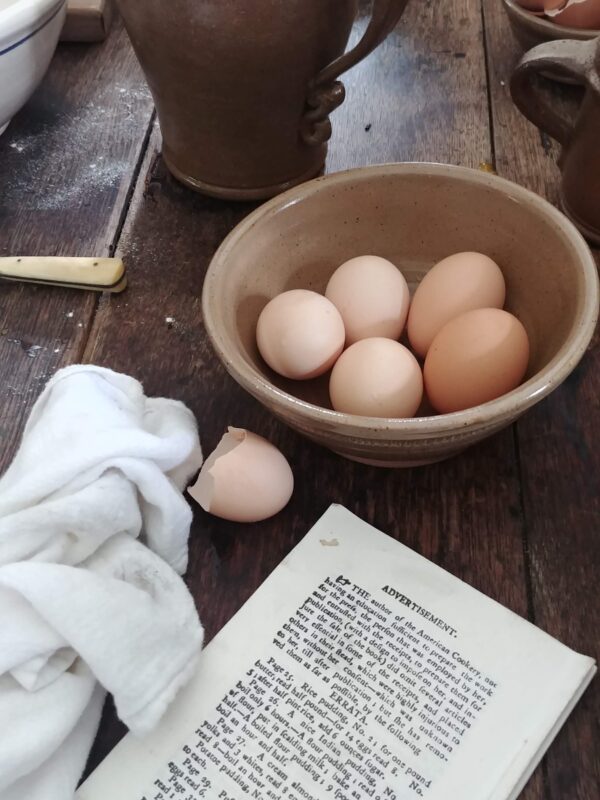Kitchen
The outdoor kitchen was one of the most important buildings on the farm. 18th century kitchens were built in separate structures due to the odors and intense heat associated with cooking, as well as a concern for the dangers of fire.
A detached kitchen also created more of a separation of status between the family in the main house and the enslaved working in the outbuildings. The kitchen was staffed by an enslaved cook and multiple enslaved assistants. The loft above the main room in the kitchen served as an area for sleeping and storage. The daily activity of the kitchen was supervised by the enslaved cook, with input from Lucy Croghan. Lucy also consulted for the use of sugar and other spices, as she held the keys to the cabinet where these expensive supplies were stored.

The large stone fireplace was central to food preparation, a labor intensive and time-consuming task. Using pots and kettles suspended on a swing-out crane and over coals arranged along the bricks, the cook would use the length of the fireplace to prepare meals for the family and visitors. This fire would burn continually throughout the day and banked at night so it could continue to warm the building and the loft above, while also making it easier to start the fire in the morning for breakfast preparation. The enslaved workers in the kitchen were responsible for preparing all of the meals for the Croghan family and any guests staying at the house, so the work of the kitchen was an all-day affair.
One enslaved head cook that we have a name for was named Sam Croghan. Cooking in a setting like this is a skill that has to be honed and she was a master of it; as historian Michael Twitty, who studies the effect of African food ways on the development of American cuisine via enslaved cooks points out, Africans who were enslaved may have come here empty handed but they were not empty headed. Here, Sam could accomplish anything that any of us could do in a modern kitchen and beyond because of his accumulated special knowledge and skill. One of the many reminders at Locust Grove that the enslaved were individual human beingswith a past, a story, hopes, and dreams and should never be seen just as a lump concept of a mass of laborers.

